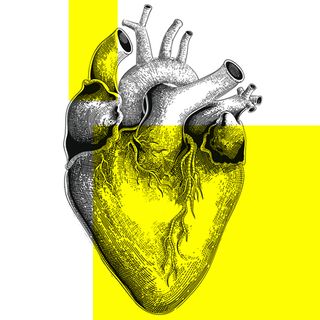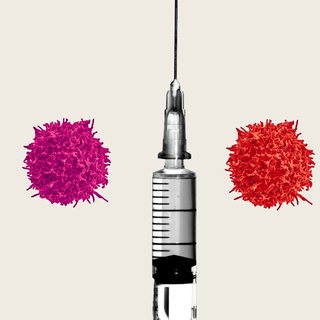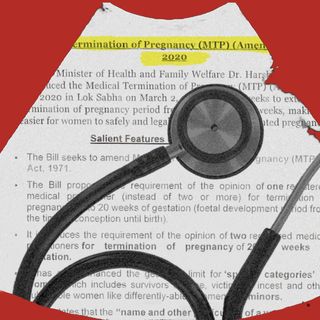
Health Tracking Apps Provide a Worrying Pipeline to Eating Disorders. Better Tech Design Can Fix That.
“If we truly want to promote health, then … we have to design for the interconnectedness of our physical and mental health.”

Health-focused phone apps and wearable technology are making fitness a far more individualized, self-driven experience by allowing users to track diet and exercise statistics and customize goals. These applications, known as health trackers, include calorie counters, nutrition trackers, step counters, fasting trackers, water-intake trackers, and more. They are wildly popular with adults who are increasingly driven to improve their productivity and living standards. As of 2019, the global market share for wearable technology is valued at around US$33 billion, and the market share for fitness apps is valued at US$4.5 billion, with both expecting healthy growth rates over the next decade.
But when such weight and diet tracking is influenced by unhealthy behaviors like appearance-centric diet culture, disordered eating, and eating disorders, health tracking technology can morph into a tool of self-destruction instead. Intricately tracking one’s food intake and exercise serves to worsen symptoms of eating disorders based on restrictive eating, binging, and purging.
Health trackers already attract individuals with eating disorders due to their large, detailed repositories of food items and their nutrition statistics. The most alarming concern remains immediate design loopholes that can endanger individuals’ health. Apps like MyFitnessPal and Lifesum allow individuals to insert custom calorie requirements as low as 500 calories and aggressive regimes like losing a kg a week, while intermittent fasting apps like Zero offer premium services that allow fasting to extend for several days.
Related on The Swaddle:
Could Intuitive Eating End Diet Culture?
“When we talk about eating disorders, we are essentially talking about disorders in body image where you feel that you are fatter than you are, you have more weight than you actually have, and so on. And essentially the underlined component is anxiety. There is anxiety around these issues and anything that fuels that anxiety is going to cause a further disordering of the body image and issues around that body image,” explains Dr. Sanjay Chugh, a Delhi-based psychiatrist. “So now when you start using a health tracking app, like a calorie counter, or a step counter, what you’re doing is you are possibly looking at these apps maybe 20 times a day. And each time that you look at it and you feel like you’ve not met your desired target for the day, your anxiety goes up. The moment your anxiety goes up, the chances are that the symptoms of the eating disorders start to increase.”
Health tracking apps also rely heavily on gamification — using game-related principles in non-game contexts in order to motivate users to participate daily. This involves setting goals, receiving affirmations from the app for meeting those goals, and receiving disapproval if those goals are not met. It could be as simple as text turning bright red or a highlighted graph showing an excess of calories. Or, it could be a bit more obvious: the app Carrot FIT gives the user’s avatar the choice of either being “rewarded with fabulous prizes” or receiving electric shocks for “blimping up.”
Individuals with eating disorders have personality traits leaning towards perfectionism and internalized shame, which enables competitiveness. “When it comes to competitiveness, you are forever comparing yourself to people around you and you’re coming out inferior in the process,” Dr. Chugh adds. “In this case, the inferiority is revolving completely around your body image, your weight, how you look, how you feel, you look how you want other people to see you. This is an integral feature of eating disorders.” In this case, weight loss gamification is the ideal enabler because it encourages and rewards competition.
Related on The Swaddle:
An Obsessive Need to Keep a Healthy Diet Could Soon Be Classified as an Eating Disorder
Unlike fashion magazines and diet pill ads, a health tracker isn’t openly biased towards thinness. Yet, the continued provision of hyper-detailed food and nutrition information, customization, and gamification in these apps can both aggravate eating disorders and lull unsuspecting users into developing eating disorders.
Dr. Elizabeth Eikey, an assistant professor at the University of California, San Diego School of Public Health and Design Lab, researched the behaviors of women with eating disorders who also used weight loss apps.
“Users go through stages of use and report both positive and negative effects of the app at these various stages,” she writes. “As users reflect back on their journey, they talk a great deal about the negative effects of the app during the early stages of use. However, when they first began using the app, they often did not realize their behaviors were indicative of an eating disorder and even found the app helpful.”
Even though Eikey’s research states that some users could self-motivate themselves to recover with the help of the app, the fact that the app pushed them towards or exacerbated an eating disorder is damning enough.
In an email to The Swaddle, Dr. Eikey explains that disordered eating and unhealthy weight loss practices are common, and therefore cannot be ignored as a fringe problem that doesn’t affect the majority of an app’s user base. “Even if a person doesn’t meet the ‘threshold’ for a clinical eating disorder, that doesn’t mean that they never experience negative emotions related to their body and food. Everyone has mental health, and it fluctuates,” she says. “When we start to think of users as complex people who have histories and experiences they are bringing to the table, then it becomes more difficult to draw hard lines between intended and ‘unintended’ users. It can also be useful to design for these types of cases and try to mitigate unintended negative consequences because it can lead to change that benefits all users, not only those with eating disorders.”
Dr. Eikey also points out the interplay between context, the person, and the tool itself. “I don’t think technology is ever neutral. It’s always designed and developed by people who have their own lived experiences and biases that intentionally or unintentionally get embedded into the things they create,” she says. “Often technologies like some health tracking apps aren’t responsive to the context of individuals nor society, which can lead to unintended negative consequences. It’s not to say that these tools don’t work for some people and that some people can’t develop healthier relationships with food and their bodies utilizing these technologies, but if we truly want to promote health, then we can’t only use weight and other quantified metrics as proxies for health, we have to design for the interconnectedness of our physical and mental health, and we need to think more critically about the beauty standards and weight-loss culture we’re feeding into.”
Researchers, psychologists, and nutritionists suggest several broad interventions that can aid changes in these apps. Many advocate for a warning system.
“I’d like to see warnings on these apps to alert people when their behaviors may be too extreme, or when their weight may be outside of a healthy range.” Dr. Bryony Bamford, a clinical psychologist specializing in eating disorders, tells Vice. Deanne Jade, who founded the U.S. National Centre for Eating Disorders, pushes further — for a government health warning within each app. There are three problems with this approach, though. First, such warning labels already exist in major apps like MyFitnessPal but can be easily clicked away or ignored. Second, Eikey’s research states that a lot of these warning labels tend to be a positive reinforcement for individuals with eating disorders — eating less is a win, not a problem. Third, these warning labels do not really inform users of the damage they’re about to experience. Everybody knows that eating 500 calories a day is technically unhealthy, but that low number is still linked to a popularly perceived positive result: thinness. Fewer people are aware of the side effects of such low-calorie intake: severe malnutrition, exhaustion, hair loss, period loss, and even death.
That’s why other experts suggest large-scale changes to each app’s UI and approach to center health rather than weight loss. Eikey’s research suggests that heavy numerical nutrition information, the usage of red- and green-colored fonts to denote wins and losses, and daily logging of food information created anxiousness and guilt among individuals with eating disorders. The damage of heavy numerical information is supported by previous research that has found weight tracking is heavily reliant on outdated and unnecessary quantitative models like Body Mass Index, which the average user does not require to lose weight.
Related on The Swaddle:
The Unique Factors That Contribute to Eating Disorders in India
Personal agency is the biggest factor to consider while making these design changes, these experts say. Dr. Eikey agrees that it’s necessary to test features that can achieve a balance. “It’s not about taking away someone’s agency, being condescending, or labeling someone or their behaviors as ‘bad,'” she says. “I think there is a tendency to do this with eating disorder-related behaviors, which can increase stigma and reinforce negative feelings, which we don’t want to do. It comes back to having people more meaningfully involved in the entire process, e.g., coming up with ways to help people understand the limitations of the technology, promote health, and mitigate negative consequences.”
To aid this, a promising model for health tracking apps can be the ability to customize how often you receive reminders to use the app, thus reducing data overload within the app. Some examples like Recovery Record and Rise Up are specifically designed for individuals in recovery from eating disorders and disordered eating. These apps use some aspects of health tracking like logging and rewarding frequent usage but reject quantitative measures of nutrition and, more importantly, offer direct contact to clinicians who can guide individuals towards recovery. While most individuals prefer broad-scope health trackers over those set up for a particular condition, these apps create a model for health tracking that doesn’t involve the stress of daily logging and calorie counts. Other apps notable in their innovation include Aloe Bud — a self-care app that allows individuals to set specific food and water tracking reminders that they are comfortable with, rather than encourages daily logging.
While health tracking, weight loss, and fitness in the conventional sense have benefited individuals across the world, they have largely failed in curtailing the damage caused to individuals with eating disorders. This is especially alarming considering how eating disorders affect 9% of people worldwide, with significantly high mortality rates — especially for those with restrictive eating disorders like anorexia nervosa and bulimia nervosa. Yet, the potential for change remains strong, with health app interfaces that can radically change the way at-risk individuals engage with diet culture — and themselves.
Aditi Murti is a culture writer at The Swaddle. Previously, she worked as a freelance journalist focused on gender and cities. Find her on social media @aditimurti.
Related


How Covid19 Variants Are Making It Even More Critical to Vaccinate Everyone, Quickly
